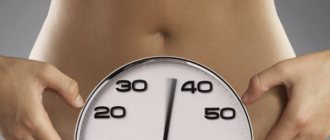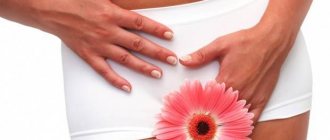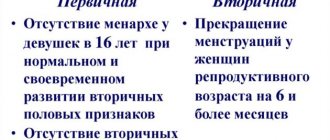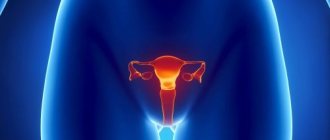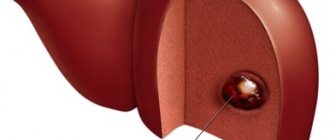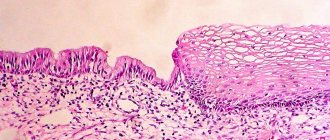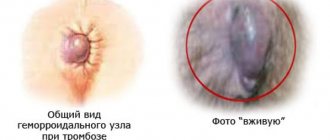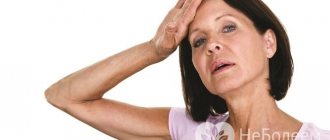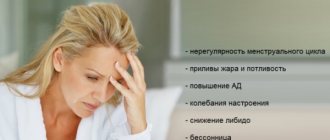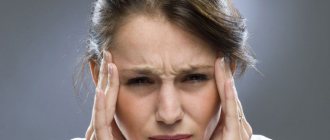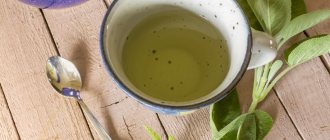Diet for menopause (weekly menu)
| Day of the week | First breakfast | Lunch | Dinner | Dinner |
| Monday | Rice porridge with water, boiled chicken | Cottage cheese with unsweetened yogurt | Borscht, boiled potatoes, steamed fish | Stuffed cabbage rolls or fruit salad, to which you can add flax seed |
| Tuesday | Cottage cheese casserole, grain bread toast | Dry unsweetened cookies and banana | Vegetable soup with barley or rice, potatoes with boiled veal | Oven baked chicken, unsweetened yogurt |
| Wednesday | Millet porridge with milk and honey | Fruit and berry smoothie | Buckwheat soup, vegetable stew and boiled meat | Potato casserole, kefir |
| Thursday | Vegetable salad with nuts, white chicken meat (breast) | Apples | Meatball soup, mashed potatoes with baked fish | Dairy ice cream, biscuits |
| Friday | Buckwheat porridge with raisins, grain toast | Pears and unsweetened yogurt | Rice soup, stew with boiled potatoes | Vegetable stew and boiled chicken |
| Saturday | Cottage cheese with honey or dried fruits (dried apricots, raisins, prunes) | Bread with butter | Vegetable soup, wholemeal pasta with mushroom sauce | Boiled veal with vegetable salad |
| Sunday | Wheat crackers with milk | Ryazhenka | Borsch without meat, rice with chicken | Vegetable stew, fish |
Physiology of menopause
After 35 years, women begin to experience a gradual decline in sexual function. And at the age of 50, menopause first appears: menstruation stops or becomes scanty (rare), and the woman notices unpleasant changes in her health. In 80% of women, menopause is difficult or very noticeable.
Symptoms of menopause. Memo
Mood swings, excess weight, wrinkles and hot flashes are the external manifestations of menopause. To these are also added internal “problems”: palpitations, insomnia, shortness of breath, absent-mindedness and forgetfulness, tearfulness - all this makes the life of a fading lady boring and unbearable.
Hot flashes - bouts of profuse sweating, fever. The skin of the face, neck, back of the head, and chest turns red. After a hot flash, many ladies feel chills. The attacks last from 30 seconds to 2-3 minutes and most often occur between 6-8 o'clock in the morning and 8-10 o'clock in the evening. Based on the number of hot flashes, the following degrees of menopause are distinguished:
- mild form: up to 10 hot flashes per day;
- average: up to 20 attacks plus minor loss of performance;
- severe: more than 20 hot flashes per day plus significant loss of performance.
Since 1950, hormone replacement therapy (HRT) has appeared in the arsenal of doctors, the essence of which is as follows: medications for hot flashes and sweating based on estrogen and progesterone compensate for their deficiency in the body and alleviate the symptoms of menopause.
Menopause in women and men: what are the differences?
Treatment of hot flashes during menopause: tablets, patches and other remedies
- The herb sage is a very popular folk remedy for menopause - you can drink it simply in the morning instead of tea, brew 1 teaspoon with two glasses of boiling water, boil for 1 minute. This sage tea should be drunk 3 times a day for 14 days, then the same amount, a break and another course.
- As soon as the tide begins, you should immediately raise your arms up and, if possible, lower your legs into a basin of hot water. This is very effective in relieving the symptoms of hot flashes.
- Oregano preparations are very strong sedatives; they affect the central nervous system and increase the tone of the muscles of the uterus. In addition, oregano has analgesic properties, anti-inflammatory, choleretic effects, it is used for insomnia, hypertension, and nervous excitement.
- Healthy herbal tea – 2 tbsp. spoons of chamomile 30 g of valerian roots 30 g of peppermint. From this collection take 2 tbsp. spoons, pour half a liter of boiling water. Let it brew in a thermos for 3 hours, strain and take a glass 15 minutes before meals in the morning and evening.
To eliminate unpleasant symptoms, you should pay attention to herbal remedies, because popular and affordable plants can provide real help:
- Rowan. A tincture is prepared from the berries according to the “glass by glass” principle. Time and place of infusion - a month in the refrigerator. Dosage: 1 tsp. for the night.
- Shiitake mushroom tincture. It is better to buy it ready-made and take 5 drops 2 times a day. To make your own tincture, you need to take 5 g of shiitake mushroom and infuse it for a couple of weeks in a glass of vodka.
- Walnut partitions. Suitable for making alcoholic tinctures and water infusions: pour 400 ml of water over the partitions of 10 nuts and leave overnight. In the morning – put on fire and cook for 1 hour. Strain and drink 3 tbsp. l. on an empty stomach.
- Blackberry leaves, lemon balm, thyme, taken in equal proportions, are brewed with boiling water and drunk instead of tea. Raw materials are taken at the rate of 1 tsp. mixture per glass of boiling water.
- Cohosh (snake root). Boil 1 tsp over low heat. raw materials in 200 ml of water, leave for 2 hours. This is the daily dose of decoction, which must be consumed in 4 doses.
- Hop cones. An alcohol tincture is prepared from them (20 g glass of vodka). After 7 days of infusion, the tincture is consumed 5 drops twice a day.
- Motherwort, marsh dry grass, hawthorn, woodruff. This is a mixture for preparing herbal tea (raw materials and boiling water are taken in a ratio of 1:10).
Hot flashes are accompanied by sweating. To make hygiene procedures more effective, it is recommended to add herbal decoctions or healing oils to the bath, and the water should not be excessively hot.
Additional components are:
- geranium oil sea salt (mix no more than 10 drops with bath salts and dissolve in water);
- a decoction of valerian root, although it can be replaced with two bottles of pharmaceutical “valerian”;
- herbal decoction (wormwood - 3 parts, pine buds, sage, calamus root, chamomile, oregano, thyme, yarrow - 1 part each). Prepare 3 liters of decoction, using 10 tbsp. l. herbal mixture and the required amount of boiling water. Boil the mixture for 10 minutes, let it brew, strain and pour into a bath of water.
Juice therapy involves consuming freshly squeezed vegetable and fruit juices. Particularly effective are beetroot-carrot and apple-orange. Lingonberry, cranberry juices and compotes are considered healthy drinks for menopause.
How to get rid of unpleasant symptoms?
Currently, there are various treatment options for menopausal symptoms in women. Here we usually distinguish:
- Hormonal therapy, which often solves the problem, but, unfortunately, is not suitable for all patients due to possible intolerance or side effects;
- Non-hormonal treatment with herbal preparations (comparatively less effective, but safer method);
- Modern alternative remedies (SERM) are, first of all, the first PPG injectable drug (combines not only a therapeutic, but also a beauty effect and has a high safety profile).
It is also important to remember that an important factor in the success of menopause treatment is strict adherence to all the recommendations of the attending physician.
Treatment methods for hot flashes
The onset of menopause is not a painful condition that requires intensive therapy. Because the process is natural and inevitable. But in most cases, it is impossible to do without medications. Although, if hot flashes do not cause much concern to a woman and do not affect the quality of life, then there is no point in taking medications.
, "Doxepin", "Azafen"
| Drugs | Hormonal | Non-hormonal, dietary supplements | Antidepressants |
| "Ovestin" | Relieves all menopausal symptoms in the shortest possible time | ||
| "Divina" | Contains estrogens. Helps prevent osteoporosis | ||
| "Livial" | Prescribed one year after the last menstruation, helps prevent the development of osteoporosis | ||
| "Lerivon" | |||
| Calming | |||
| "Prozac", "Inquizan", "Nortriptyline" | Stimulating | ||
| "Maprotiline", "Anafranil" | Have a complex effect | ||
| "Lignarius" | Contains a special substance – lignan, isolated from spruce knots | ||
| "Tsi-Klim" | Active ingredient: black cohosh root extract | ||
| "Climaxan" | Can eliminate all manifestations of menopause | ||
| "Remens" | Homeopathic medicine containing 3 types of phytohormones | ||
| "Feminal" | Dietary supplement containing red clover | ||
| "Estrovel" | Multicomponent dietary supplement | ||
| "Tibolon" | Eliminates most symptoms of menopause | ||
| "Klimonorm" | Contains progesterone and estrogen | ||
| "Estrogel" and "Divigel" | Gel-like preparations for external use containing estradiol |
Hot flashes are accompanied by an increase in blood pressure, which is especially dangerous in hypertension. Menopausal “shocks” can cause the development of hypertension, and even provoke a stroke.
To control blood pressure levels, the patient may be recommended to use antihypertensive drugs, for example, Capoten and Anaprilina. To reduce the severity of episodes of hot flashes, it is necessary to take drugs with antispasmodic, anticolvusant and anticonvulsant effects (Gabagamma, Catena, Neurontin). The drugs are serious and should be taken under the supervision of a doctor.
To eliminate the deficiency of nutrients that stimulate the functioning of vital organs and systems, the doctor may recommend vitamin and mineral complexes. They help relieve menopause.
Menopace and Lady's Formula Menopause are popular. Sedatives such as Velaxin and Ephelon, which are prescribed for those who suffer from insomnia, also have a good effect. Those who do not consider homeopathy a pseudoscience can try homeopathic remedies - harmless and possibly effective - “Klimakt-Hel” and “Klimaktoplan”.
The selection of optimal therapy should be carried out by a doctor, since self-medication can provoke even greater health problems. The appropriate medicine is prescribed based on examinations carried out by a general practitioner, gynecologist and endocrinologist. Also, to combat menopausal hot flashes, it may be necessary to conduct a laboratory blood test for hormone levels, ultrasound of the thyroid gland, mammary glands and pelvic organs.
Expert opinion
Many women cannot take hormonal medications due to certain health conditions. For example, if there is a risk of breast cancer, a tendency to form venous blood clots, cerebrovascular accident (stroke) and heart attack, hormone replacement therapy is not recommended, since the potential risks from it may be higher than the benefits.
Obstetrician-gynecologist of the highest category Oksana Anatolyevna Gartleb
During menopause, changes in the water-salt balance occur, resulting in fluid retention in the body and an increase in blood volume. This leads to increased blood pressure during hot flashes. Taking medications that lower blood pressure helps reduce sweating and the feeling of heat during such conditions.
These medications, given in small doses, help reduce the stress caused by hot flashes. In addition, taking antidepressants and sedatives in some cases reduces the frequency and intensity of hot flashes by normalizing the condition of blood vessels.
Expert opinion
Remember that antidepressants can be quite harsh on your health and may cause some side effects. Therefore, their prescription and selection of the appropriate dosage should be handled exclusively by a specialized specialist.
Obstetrician-gynecologist of the highest category Oksana Anatolyevna Gartleb
During menopause, it is recommended to take complexes rich in retinol, tocopherol, ascorbic acid, B vitamins, vitamin D, calcium, magnesium, boron.
Dietary supplements based on phytoestrogens. Phytohormones include coconut oil, chamomile, calendula, ginseng root, grapes, dates, pomegranates, red clover, alfalfa, flax, licorice, etc.
Not only traditional medicines, but also traditional medicine methods help to cope with fever and sweating during menopause. They should not be considered as the main means of therapy, but they can act as effective additional means.
Various herbs are used to combat the unpleasant symptoms of menopause. You can prepare decoctions and infusions from them, for example:
- Hawthorn fruits and flowers. Rinse 5 g of prepared raw materials, place in a thermos and pour a glass of boiling water. Leave for an hour. Take half a glass 2 times a day before meals. The infusion not only reduces the frequency and intensity of hot flashes, but also improves heart function and vascular condition.
- Red clover. Red clover belongs to the category of phytoestrogens, so this plant is actively used to reduce hot flashes. To prepare the infusion you need to take 2 tbsp. dry crushed red clover herb, place in a thermos and pour a glass of boiling water, leave to infuse for 10 hours. Take the resulting infusion before meals, 50 ml.
- Sage. It is useful to take a decoction. To prepare it, you need to take 1 tbsp. dry sage, pour 1.5 tbsp. boiling water and simmer for 5 minutes over low heat. Then cool the broth, strain and drink as tea throughout the day.
- Red brush root (rhodiola tetrapartite). Before taking products based on red brush, you should consult your doctor, as this plant is contraindicated for women suffering from hypertension. Pour the dried crushed root (1 tbsp) into a glass of water and boil for a quarter of an hour. Cool the broth, strain and take 100 ml before meals three times a day.
- Borovaya uterus.
This plant helps to compensate for the lack of estrogen, as it belongs to the category of phytohormones.To prepare a decoction of boron uterus, you need to take a tablespoon of the dry plant, pour a glass of boiling water over it and simmer over low heat for 5 minutes. Then strain, cool the broth and drink 100 ml before meals three times a day.
- Dry rosemary. To prepare the decoction, take 1 tbsp. raw materials, pour a glass of boiling water and boil for a quarter of an hour. Then strain, cool and take the resulting product before meals three times a day.
Menopause in a woman without hot flashes
During menopause, a woman must learn to control the processes of hot flashes. In order to alleviate a woman’s condition during menopause, you can be treated with the following:
- Therapy with non-hormonal medications.
- Therapy with medicinal herbs (herbal medicine).
- Homeopathy.
- Methods of treatment using traditional medicine.
- Alternative ways to alleviate your condition during menopause.
In order to carry out drug treatment for menopause, you need to clearly understand how it goes and what medications are needed for this.
What medications will the doctor prescribe?
- Medicines to normalize blood pressure. Such treatments are needed because hot flashes are very often accompanied by a rise in blood pressure. If you notice problems with your blood pressure, you should definitely notify your doctor about this.
- Since the course of menopause is characterized by increased nervous tension, the patient may be prescribed mild antidepressants. This is necessary not only so that the nerves are in order, but also so that attacks of hot flashes do not occur so often, because being in a stressful situation very often provokes another attack.
- For this purpose, sedatives may also be prescribed.
- Contraceptive medications ease symptoms during menopause. They are especially indicated for those who suffer from vaginal discharge during menopause. But such a remedy should only be selected by a doctor on an individual basis.
Attention! Among other things, a good doctor will have to have a conversation with his patient about how important it is to control yourself during menopause; that the ability to control your emotions is a great help to yourself. That is, the leading role is still given not to drugs, but to self-control.
Herbal medicine is not at all the last place in the fight against hot flashes during menopause. In order to ease the symptoms of menopause and minimize hot flashes, you need to consume medicinal plants that contribute to this. Also, the mixtures listed below will help not only get rid of hot flashes, but also normalize hormonal levels, improve blood circulation, help you calm down and feel better, simply lift your spirits and give vital energy.
How to prevent hot flashes and reduce their unpleasant consequences
It is impossible to talk about complete prevention of hot flashes, but you can independently influence the frequency of attacks and their strength, as well as reduce their intensity. That is, by following the following recommendations, you can significantly smooth out the manifestation of unpleasant symptoms:
- An active lifestyle is one of the keys to the health of every person. Sports activities have a positive effect not only on physiological processes in the body, but also improve the overall psychological state. And, as you know, it also directly affects how severe menopause is.
- Proper nutrition, which should include plant foods. Avoid fatty, fried and spicy foods, and eliminate alcohol and caffeinated drinks. Drink more water, the norm per day is 1.5-2 liters. In the case of hot flashes, water will be needed in order to restore fluid balance after an attack.
- Wear clothes made from natural fabrics, avoiding synthetics. This is due to the fact that natural fabrics have excellent ventilation properties and promote normal heat exchange. Also, given the profuse sweating during an attack, natural fabric will prevent the appearance of unpleasant body odor. Bed linen should also be made from natural fabrics, because most often attacks appear at night.
- Separately, it should be said about winter clothes - avoid sweaters with high collars. It is better to wear a jacket with a neckline, which can be covered with a scarf to protect against the cold. It will then be easier to remove the scarf during an attack to alleviate the general condition.
- Take care of your own psychological health - stress and constant emotional tension only worsen your condition during menopause and make hot flashes more frequent.
The mechanism of hot flashes during menopause
It is believed that the lack of estrogen during menopause affects the thermoregulation center located in the diencephalon - the hypothalamus. When the level of sex hormones in a woman’s body decreases, the concentration of estrogen reaching the brain also drops, and the temperature regulating center is deprived of its usual hormonal stimulation.
However, hot flashes occur not only as a result of endocrine changes, but also as a consequence of dysfunction of the autonomic nervous system. Dysfunction of the autonomic nervous system is aggravated by a number of factors.
Understanding the pathophysiology of the process helps to effectively get rid of hot flashes during menopause.
The mechanism of development of hot flashes during menopause is quite complex. During menopause, a cascade of changes occurs in a woman's body.
Due to the gradual depletion of the ovaries, the level of female sex hormones in the blood decreases. The hypothalamus, being the highest center for hormonal regulation in the body, seeks to compensate for the lack of estrogen by releasing additional amounts of follicle-stimulating hormone (FSH) into the blood.
But, since the ovaries are functionally “incompetent,” FSH cannot contact the receptors on their membrane and remains in the blood. If estrogen preparations are not artificially introduced into a woman’s body, the concentration of FSH will continue to increase, since the hypothalamus will release additional amounts to compensate for estrogen deficiency.
Ultimately, an imbalance in the levels of estrogen and FSH will lead to additional disruptions in the functioning of the hypothalamus. As a result, in addition to follicle-stimulating hormone, other hormones of the hypothalamic-pituitary system, including thyroid-stimulating hormone (TSH), will enter the blood.
This leads to periodic releases of thyroid hormones into the blood, which is accompanied by an increase in body temperature, a feeling of heat, tachycardia, increased blood pressure, a feeling of anxiety and even panic.
In this case, the synthesis of thyroid hormones obeys circadian rhythms and occurs mainly at night. This is why hot flashes during menopause often occur at night.
The hypothalamus is not only a regulator of hormone secretion, but also a coordinator of the autonomic nervous system. Disruption of the hypothalamic-pituitary-adrenal complex during menopause leads to the fact that even to minor stimuli (stress, physical activity, stuffiness) a full-fledged response of the sympathetic-adrenal system occurs.
A sharp increase in the tone of this system manifests itself in the form of a sympatho-adrenal crisis: an increase in heart rate, increased blood pressure, vasodilation (which leads to blood flow to the skin and, as a result, an increase in its temperature and redness), sweating, restlessness and anxiety, dizziness, shortness of breath.
These types of hot flashes can occur at any time of the day, but more often occur at night, due to the need to “discharge” the stress accumulated during the day.
Another reason for the development of hot flashes may be an increase in prolactin levels (also due to dysfunction of the hypothalamic-pituitary system). An increase in prolactin concentration also occurs at night, which explains night hot flashes.
How to deal with hot flashes without drugs
Gynecologists always advise women: make yourself happy! More positive! The children have grown up, all the main goals have been achieved (the house is built, figuratively, husband, family, career, etc.), which means you need to pay attention to your beloved self. Whatever you want, let it be. If you want ice cream, then you need to go and buy it, and right now, and not tomorrow, in 2 hours. If you want a book, a blouse, or anything, then you need to immediately fulfill your desire. Let it turn out later that the blouse and the book turned out to be not so necessary or completely useless, but I pleased myself momentarily, my mood lifted, my positive attitude towards life.
Women, especially Russian women, who are overwhelmed by life and work, need to love themselves; men do not pay much attention to women’s problems, they believe that women invent them themselves. Think that everything is fine with you, you can cope with any adversity, repeat af every day, come up with similar phrases that are right for you and repeat them - this gives excellent results.
Remedies, drugs, medicines for menopause from hot flashes
- In especially severe cases, the doctor may prescribe hormone replacement therapy, which softens and treats hot flashes, however, the use of hormonal pills during menopause has a sufficient number of contraindications: The most serious among them is oncological tension, that is, if a woman has uterine bleeding, the causes of which have not been established , suspicion of breast cancer, uterine cancer, ovarian cancer, signs of cervical cancer, etc.
- Hormone therapy is also contraindicated for women with bleeding disorders, liver diseases, and thromboembolism.
- Therefore, you cannot take any hormonal medications on your own. Before prescribing such drugs for hot flashes during menopause, the doctor must examine the patient: mammography, ultrasound of the mammary glands, ultrasound of the pelvic organs, cytology of cervical smears, biochemical blood test, blood clotting - coagulogram.
- There are also non-hormonal remedies for hot flashes during menopause, which can alleviate the symptoms of menopause; these are phytoetrogens, which are dietary supplements and medicinal herbs. But even their use should be coordinated with a doctor, since they can cause allergic reactions, and they must be taken for a long time to achieve the effect.
- Vitamin deficiency during menopause can contribute to increased hot flashes, so enrich your diet with vegetables, fruits, cereals, nuts (see the dangers of synthetic vitamins); during premenopause, vitamins B, C, E, as well as potassium and magnesium preparations are especially required.
- Sedatives, which calm the nervous system, are also effective in treating hot flashes. These include valerian, motherwort, peony tincture, Corvalol, they should be taken regularly for a noticeable effect to be noticeable (see sedatives for adults).
- You should be very careful when using various antidepressants. Their use is possible only in case of pathological menopausal syndrome, when a woman is not able to control her emotions and cope with stress - these are drugs such as venlafaxine, paroxetine, fluoxetine, citalpram, sertraline, etc.
- Among the homeopathic remedies, the following drugs can be distinguished: Klimakt-hel, Klimaktoplan, Klimadinon (contains extract of Cohosh racemose), they effectively help women cope with menopausal syndrome. You can also use Lachesis, Pulsatilla, Sepia.
How to deal with hot flashes without drugs
When a woman has frequent hot flashes during menopause - what to do, how to get rid of them or soften their manifestation, reduce the frequency of their occurrence?
Breath
At the very beginning of a hot flash, you should try to calm down; slow belly breathing is very effective in calming down. You should breathe deeply, the number of breaths should be 8 per minute, that is, after inhaling, you should hold your breath for 6 seconds. This breathing exercise calms the nervous system, increases the time until the next hot flash and makes it easier to bear them.
Clean fresh cool air
You should ventilate the room you are in as often as possible, and it is also good to use air purifiers and humidifiers for a more natural climate. It is always better to sleep in a room where the air temperature is lower, but under a duvet.
Cool your pillow before bed
If you first freeze a plastic bottle of water in the freezer, and then take it out and put it on the pillow some time before bed, then put it under the pillow, you can sleep all night without hot flashes. If you have a huge refrigerator and a small pillow, cool it directly in the refrigerator.
Plant food
If you reduce the consumption of meat and other protein foods to 20% of the daily diet, and the bulk of the food intake will be vegetables, fruits, legumes, cereals, soybeans, flaxseed, nuts, then this will only have a positive effect on your health, the frequency will decrease and symptoms will be alleviated tides During menopause, sprouted wheat grains, whole grains and nuts are especially useful; they contain vitamin E, which is so necessary for a woman during menopause.
Active lifestyle, fitness, yoga, bodyflex, dancing, swimming
However, concomitant diseases should be taken into account, since not all women are suitable for active sports. Swimming is the most beneficial type of physical activity; it strengthens muscle tone, improves immunity, and heals the entire body. Just walking in a park area, rather than along a noisy highway with a million cars, is no less useful. If your heart health allows, you can go home not by elevator, but on foot.
Cloth
Of course, psychological health is influenced by how and what a woman is dressed in, how she feels - fashionable, chic, stylishly dressed or not. It would be nice to combine stylish clothes with those that are best worn during menopause. Hot flashes become more frequent if a woman wears synthetic clothing that is tight and tight. The most comfortable clothes made of linen, viscose and cotton. Synthetic fabrics impair ventilation and lead to overheating; in addition, they do not absorb moisture well; such clothes quickly lead to an unpleasant odor of sweat. Clothes should be spacious, loose-fitting, and it is better to wear several things, for example, 2 blouses; if it gets hot or the tide is coming, you can always take one off, than to steam in one warm blouse.
Stress
One of the most important risk factors for the duration of menopausal hot flashes is nervous tension and strong feelings. It’s easy to say “you need to be stress-resistant,” but it’s very difficult to deal with negative information, troubles, and financial difficulties without affecting feelings, emotions, and without depleting the nervous system. It’s worth learning to take care of your nervous strength, tune in, say positive thoughts and affirmations to yourself, believe that everything will be fine, and think positively about everything that happens. The calmer the woman, the less chance of hot flashes!
Fluid intake
It is also important for women over 40-45 years old to drink up to 2 liters of clean water per day (if there are no contraindications). Increased sweating must be replenished, and the more you drink, the less frequent the manifestations of menopause will be. If such discomfort rarely bothers a woman, then these methods can allow a woman to live a full life. However, if this is not enough, then you should consult your doctor, who can recommend various medications for menopause in women - these are radical measures, but more effective.
Homeopathy against menopause
The philosophy of homeopathy is as follows: the minimum dose of the active substance in the preparation. Many patients mistakenly believe that homeopathic remedies are based only on herbal ingredients. This is wrong. Homeopathy does not refuse to use a synthetic base.
These drugs are prescribed to treat mild symptoms of menopause: insomnia, mood swings, depression. Their effectiveness has not been proven, but homeopathic remedies have many fans and a lot of excellent reviews. Unfortunately, homeopathy for menopause is not able to prevent osteoporosis and diseases of the cardiovascular system.
Homeopathic medicines
- Amylenum nitrosum: prescribed for complex treatment (hot flashes, dizziness, weakness, tachycardia, anxiety, and so on);
- Argentum nitricum: treats anxiety, neurosis, fears, hot flashes, redness of the skin and fever, chills;
- Belladonna: prevents hot flashes, excitability, redness of some areas of the skin, fever, headache, uterine bleeding, insomnia, dry skin.
And also: Calcarea carbonica, Cohosh or Actaea racemosa, Glonoin, Ignacia, Lachesis, Lycopodium, Natrium muriaticum, Nux vomica, Pulsatilla, Sepia, Sulfur. This also includes Remens and some other phytohormonal preparations.
The successful prescription of a homeopathic drug depends on the individual characteristics of the woman, as well as on the manifestations of menopause. The homeopath evaluates the most subtle and seemingly insignificant phenomena. This is why self-medication with such drugs may be useless and completely disappoint the patient.
The main disadvantage of homeopathy is the duration of treatment and the need to consult a qualified homeopath. “Grains and droplets” can be safely combined with vitamin and mineral complexes and other medications.
Video. Menopause and homeopathy. Homeopath tells
ethnoscience
The help of traditional medicine for excessive sweating during menopause will come in handy for those women who prefer herbal remedies and consciously or according to indications refuse hormonal drugs.
The following plants have phytoestrogenic activity:
- red brush;
- yarrow;
- alfalfa;
- sage;
- hog uterus;
- angelica root;
- calendula;
- black cohosh (black cohosh).
The listed plants can be combined with each other or used separately. Herbs and roots are brewed with boiling water or made into decoctions. Use herbal remedies for hot flashes and severe sweating in courses of 2-3 months. Then you need to take a break of 3-4 months and repeat the treatment.
But the most phytoestrogens are found in soy and flax seeds. These products lead among all others. Experts have long noticed that in regions where soy is regularly consumed as food, menopause in women occurs 5-7 years later.
In addition to phytoestrogens, flax seeds contain Omega-3 acids, which prevent the development of atherosclerosis. To get the full benefit of the plant, it is recommended to grind the seeds in a coffee grinder rather than simply brewing them with boiling water.
Diagnostics
If you suffer from hot flashes during menopause at the age of 45–50 years, laboratory tests may be required to conduct a differential diagnosis.
Laboratory research methods
The most commonly used biological materials are blood and urine. During menopause, it is first advisable to go through the following markers:
- blood for anti-Mullerian hormone. The results will indicate ovarian reserve;
- follicle-stimulating hormone test. To do this, buy test strips “Test for menopause” at the pharmacy;
- analysis for the content of inhibins A and B;
- analysis for prolactin and cortisol. The study is relevant if it is necessary to differentiate menopause from acute stress.
Usually the listed laboratory methods are sufficient. But only a gynecologist can prescribe the necessary examination and determine what medications will be prescribed, or what to do to relieve the condition non-drugly.4
Differential diagnosis
There are a number of diseases that manifest themselves with symptoms similar to hot flashes. Eg:
- thyrotoxicosis (thyroid disease);
- tuberculosis (hot flashes accompanied by profuse sweating);
- carcinoid (neuroendocrine tumor);
- pheochromocytoma or other tumor process;
- abstinence when using certain types of drugs.
Often, symptoms similar to hot flashes appear with the development of acute stress and certain mental disorders, including depressive states.
